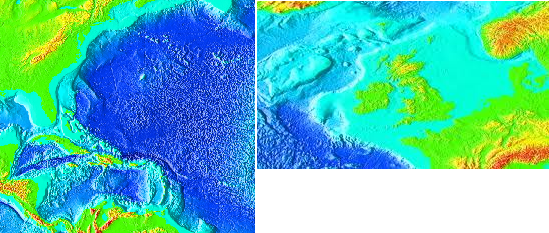On May 31st, 2013 a project led by the University of Maine deployed a 1:8 scale demonstration turbine off the coast of Castine, Maine. The new 65-foot-tall VolturnUS prototype is composed of a floating concrete base and a light-weight composite tower to help reduce the overall cost of the system. This project is associated with a larger commercial demonstration project called Aqua Ventus I that plans to install a pair of 6-MW floating turbines by 2017. After already receiving $12 million from the Department of Energy, the Aqua Ventus I is attempting to recieve an additional $48 million in funding after the Department of Energy selects three of seven competing offshore wind projects in 2014.
Europe has historically dominated the offshore wind industry with 1,371 turbines installed and grid connected for a total 3,813 MW at the end of 2011. However, 75% of European windfarms are monopiles driven directly into the seabed on the shallow European continental shelf, and the average water depth of windfarms are steadily increasing as wind sites become more scarce. While monopiles are ineffective in deep water, floating windfarms are the solution and will therefore be the future of the industry. As of 2012, Europe had only two full scale grid-connected floating turbines, so the VolturnUS is a significant first step for the U.S. to enter the offshore wind industry.
Foating turbines are of particular importance to the U.S. because the continental shelf does not extend far off the east coast, and is practically non-existent on the west coast. As such, the future of offshore wind in the U.S. will be largely dominated by floating wind turbines. The cost-effective innovations of this project help pave the way for the industry to compete with other forms of electricity generation with no sibsidies.

Read more about the story here.
